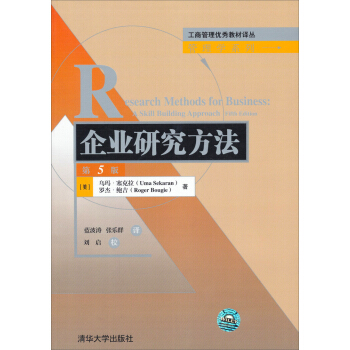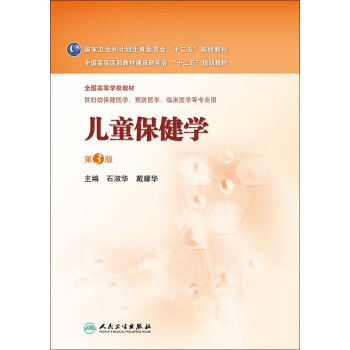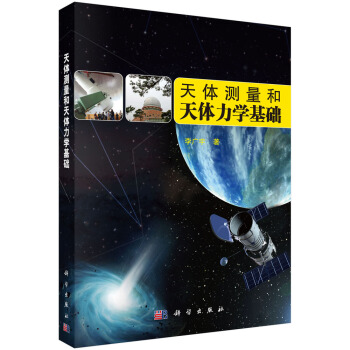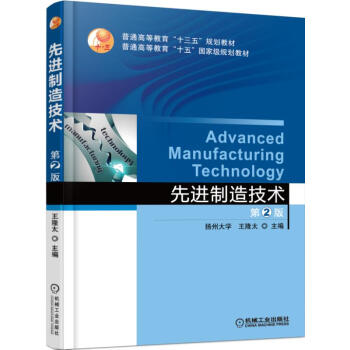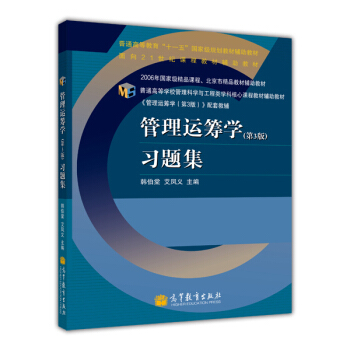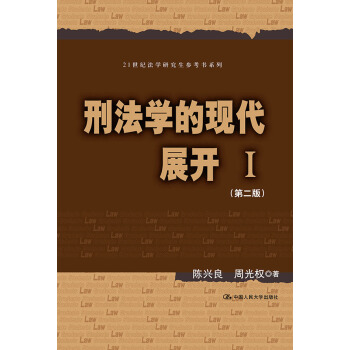![固体量子化学:晶体的原子轨道线性组合第一性原理计算方法 [Quantum Chemistry of Solids:The LCAO First Principles Treatment of Crystals]](https://pic.tinynews.org/11004218/rBEIC0_QcJUIAAAAAACfn0C8gq4AAAdugJnKBIAAJ-3908.jpg)

具体描述
内容简介
It is traditional for quantum theory of molecular systems (molecular quantum chemistry) to describe the properties of a many-atom system on the grounds of in- teratomic interactions applying the linear combination of atomic orbitals (LCAO) approximation in the electronic-structure calculations. The basis of the theory of the electronic structure of solids is the periodicity of the crystalline potential and Bloch- type one-electron states, in the majority of cases approximated by a linear combina- tion of plane waves (LCPW). In a quantum chemistry of solids the LCAO approach is extended to periodic systems and modified in such a way that the periodicity of the potential is correctly taken into account, but the language traditional for chemistry is used when the interatornic interaction is analyzed to explain the properties of the crystalline solids. At first, the quantum chemistry of solids was considered simply as the energy-band theory or the theory of the chemical bond in tetrahedral semi-conductors . From the beginning of the 1970s the use of powerful computer codes has become a common practice in molecular quantum chemistry to predict many properties of molecules in the first-principles LCAO calculations. In the condensed-matter studies the accurate description of the system at an atomic scale was much less advanced .内页插图
目录
part i theory1 introduction
2 space groups and crystalline structures
2.1 translation and point symmetry of cryst&lz;
2.1.1 symmetry of molecules and crystals: similarities and differences
2.1.2 translation symmetry of crystals. point symmetry of bravais lattices. crystal class
2.2 space groups
2.2.1 space groups of brawis lattices. symmorphic and nonsymmorphic space groups
2.2.2 three-periodic space groups
2.2.3 site symmetry in crystals. wyckoff positions
2.3 crystalline structures
2.3.1 crystal-structure types. structure information for computer codes
2.3.2 cubic structures: diamond, rocksalt, fluorite, zincblende, cesium chloride, cubic perovskite
2.3.3 tetragonoj structures: rutile, anatase and la~cuo4
2.3.4 orthorhombic structures: lamno3 and yba2cuso?
2.3.5 hexagonal and trigonal structures: graphite, wurtzite, corundum and scmno3
3 symmetry and localization of crystalline orbitals
3.1 translation and space symmetry of crystalline orbitals.bloch functions
3.1.1 symmetry of molecular and crystalline orbitals
3.1.2 irreducible representations of translation group. brillouin zone
3.1.3 stars of wavevectors. little groups. fhll representations of space groups
3.1.4 small representations of a little group. projective representations of point groups
3.2 site symmetry and induced representations of space groups
3.2.1 induced representations of point groups. localized molecular orbitals
3.2.2 induced representations of space groups in q-basis
3.2.3 induced representations of space groups in k-basis.band representations
3.2.4 simple and composite induced representations
3.2.5 simple induced representations for cubic space groups ok, and
3.2.6 symmetry of atomic and crystalline orbitals in mgo, si and srzro3 crystals
3.3 symmetry of localized crystalline orbitals. wannier functions
3.3.1 symmetry of localized orbitals and band representations of space groups
3.3.2 localization criteria in wannier-function generation
3.3.3 localized orbitals for valence bands: lcao approximation
3.3.4 variational method of localized wannier-function generation on the base of bloch functions
4 hartree-fock lcao method for periodic systems
4.1 one-electron approximation for crystals
4.1.1 one-electron and one-determinant approximations for molecules and crystals
4.1.2 symmetry of the one-electron approximation hamiltonian
4.1.3 restricted and unrestricted hartree-fock lcao methods for molecules
4.1.4 specific features of the hartree-fock method for a cyclic model of a crystal
4.1.5 restricted hartree-fock lcao method for crystals
4.1.6 unrestricted and restricted open-shell hartree-fock methods for crystals
4.2 special points of brillouin zone
4.2.1 superceus of three-dimensional bravais lattices
4.2.2 special points of brillouin-zone generating
4.2.3 modification of the monkhorst-pack special-points meshes
4.3 density matrix of crystals in the hartree-fock method
4.3.1 properites of the one-electron density matrix of a crystal
4.3.2 the one-electron density matrix of the crystal in the lcao approximation
4.3.3 interpolation procedure for constructing an approximate density matrix for periodic systems
5 electron correlations in molecules and crystals
5.1 electron correlations in molecules: post-hartree-fock methods
5.1.1 what is the electron correlation ?
5.1.2 configuration interaction and multi-configuration self-consistent field methods
5.1.3 coupled-cluster methods
5.1.4 many-electron perturbation theory
5.1.5 local electron-correlation methods
5.2 incremental scheme for local correlation in periodic systems
5.2.1 weak and strong electron-correlation
5.2.2 method of incfements: ground state
5.2.3 method of increments: valence-band structure and bandgap
5.3 atomic orbital laplace-transformed mp2 theory for periodic systems
5.3.1 laplace mp2 for periodic systems: unit-cell correlation energy
5.3.2 laplace mp2 for periodic systems:bandgap
5.4 local mp2 electron-correlation method for nonconducting crystals
5.4.1 local mp2 equations for periodic systems
5.4.2 fitted wannier functions for periodic local correlation methods
5.4.3 symmetry exploitation in local mp2 method for periodic systems
6 semiempirical lcao methods for molecules and periodic systems
6.1 extended h/ickel and mulliken-r/idenberg approximations
6.1.1 nonself-consistent extended h/ickel-tight-binding method
6.1.2 iterative mulliken-r/idenberg method for crystals
6.2 zero-differential overlap approximations for molecules and crystals
6.2.1 zero-differential overlap apl~roximations for molecules
6.2.2 complete and intermediate neglect of differential overlap for crystals
6.3 zero-differential overlap approximation in cyclic-cluster model
6.3.1 symmetry of cyclic-cluster model of perfect crystal
6.3.2 semiempirical lcao methods in cyclic-cluster model
6.3.3 implementation of the cyclic-clnster model in msindo and hartree-fock lcao methods
7 kohn-sham lcao method for periodic systems
7.1 foundations of the density-functional theory
7.1.1 the basic formulation of the density-functional theory
7.1.2 the kohn-sham single-particle equations
7.1.3 exchange and correlation functionals in the local density approximation
7.1.4 beyond the local density approximation
7.1.5 the pair density. orbital-dependent exchange-correlation functionals
7.2 density-functional lcao methods for solids
7.2.1 implementation of kohn-sham lcao method in crystals calculations
7.2.2 linear-scaling dft lcao methods for solids
7.2.3 heyd-scnseria-ernzerhof screened coulomb hybrid functional
7.2.4 are molecular exchange-correlation functionals transferable to crystals?
7.2.5 density-functional methods for strongly correlated systems: sic dft and dft+u approaches part ii applications
basis sets and pseudopotentlals in periodic lcao calculations
8.1 basis sets in the electron-structure calculations of crystals
8.1.1 plane waves and atomic-like basis sets. slater-type functions
8.1.2 molecular basis sets of gaussian-type functions
8.1.3 molecular basis sets adaptation for periodic systems
8.2 nonrelativistic effective core potentials and valence basis sets
8.2.1 effective core potentials: theoretical grounds
8.2.2 gaussian form of effective core potentials and valence basis sets in periodic lcao calculations
8.2.3 separable embedding potential
8.3 relativistic effective core potentials and valence basis sets
8.3.1 relativistic electronic structure theory: dirac-hartree-fock and dirac-kohn-sham methods for molecules
8.3.2 relativistic effective core potentials
8.3.3 one-center restoration of electronic structure in the core region
8.3.4 basis sets for relativistic calculations of molecules
8.3.5 relativistic lcao methods for periodic systems lcao calculations of perfect-crystal properties
9.1 theoretical analysis of chemical bonding in crystals
9.1.1 local properties of electronic structure in lcao hf and dft methods for crystals and post-hf methods for molecules
9.1.2 chemical bonding in cyclic-cluster model: local properties of composite crystalline oxides
9.1.3 chemical bonding in titanium oxides: periodic and molecular-crystalline approaches
9.1.4 wannier-type atomic functions and chemical bonding in crystals
9.1.5 the localized wannier functions for valence bands: chemical bonding in crystalline oxides
9.1.6 projection technique for population analysis of atomic orbitals. comparison of different methods of the chemical- bonding description in crystals
9.2 electron properties of crystals in lcao methods
9.2.1 one-electron properties: band structure, density of states, electron momentum density
9.2.2 magnetic structure of metal oxides in lcao methods: magnetic phases of lamnos and scmno3 crystals
9.3 total energy and related observables in lcao methods for solids
9.3.1 equilibrium structure and cohesive energy
9.3.2 bulk modulus, elastic constants and phase stability of solids: lcao ab-initio calculations
9.3.3 lattice dynamics and lcao calculations of vibrational frequencies
10 modeling and lcao calculations of point defects in crystals
10.1 symmetry and models of defective crystals
10.1.1 point defects in solids and their models
10.1.2 symmetry of supercell model of defective crystals
10.1.3 supercell and cyclic-clnster models of neutral and charged point defects
10.1.4 molecular-cluster models of defective solids
10.2 point defects in binary oxides
10.2.1 oxygen interstitials in magnesium oxide: supercell lcao calculations
10.2.2 neutral and charged oxygen vacancy in a1203 crystal: supercell and cyclic-clnster calculations
10.2.3 supercell modeling of metal-doped rutile tio2
10.3 point defects in perovskites
10.3.1 oxygen vacancy in srtio3
10.3.2 superceu model of fe-doped srtio3
10.3.3 modeling of solid solutions of lacsrl-cmno3
11 surface modeling in lcao calculations of metal oxides
11.1 diperiodic space groups and slab models of surfaces
11.1.1 diperiodic (layer) space groups
11.1.2 oxide-surface types and stability
11.1.3 single- and periodic-slab models of mgo and tio2 surfaces
11.2 surface lcao calculations on tio2 and sno2
11.2.1 cluster models of (110) tio2
11.2.2 adsorption of water on the tio2 (rutile) (110) surface: comparison of periodic lcao-pw and embedded-cluster lcao calculations
11.2.3 single-slab lcao calculations of bare and hydroxylated sno2 surfaces
11.3 slab models of srtio3, srgro3 and lamno3 surfaces
11.3.1 hybrid hf-dft comparative study of srzro3 and srtio3 (001) surface properties
11.3.2 f center on the srtio3 (001) surface
11.3.3 slab models of lamno3 surfaces
a matrices of the symmetrical supercell transformations of 14 three-dimensional bravais lattices breciprocal matrices of the symmetric supercell transformations of the three cubic bravais lattices c computer programs for periodic calculations in basis of localized orbitals
references
index
前言/序言
用户评价
翻开这本书,你会被一股浓厚的学术氛围所包围。作者以一种非常沉稳和扎实的风格,循序渐进地引导读者进入固体量子化学的殿堂。开篇对“第一性原理”的强调,奠定了全书的基调,即一切计算都应该基于最基本的物理规律。随后,LCAO方法被巧妙地引入,作为处理晶体体系的有力工具。书中对晶体结构、对称性、以及Bloch定理的阐述,都力求清晰明了,但又不失深度。我印象特别深刻的是,作者在讲解如何构建哈密顿矩阵时,详细解释了各个矩阵元是如何由原子轨道以及它们之间的相互作用决定的。他对各种积分计算的推导,包括重叠积分、动能积分、势能积分等,都做到了严谨细致,让我能够深刻理解LCAO方法的物理图像。此外,书中关于自洽场(SCF)迭代计算的原理和流程的介绍,也为我提供了宝贵的实践指导。它让我明白,如何通过反复迭代,使电子的分布与原子核的电场达到一种自洽的状态。这本书的价值在于它能够让你从“知其然而不知其所以然”的状态,转变为“知其然,且知其所以然”。它为你提供了一个坚实的理论基础,让你在面对各种复杂的材料计算问题时,能够游刃有余,进行深入的分析和准确的预测,这种深度理解是任何“黑箱”软件都无法替代的。
评分这本书的阅读过程,更像是一次智力的冒险。作者以非常系统和严谨的风格,将固体量子化学的复杂概念层层剥开,展现在读者面前。从“第一性原理”的核心理念出发,他逐步引导读者理解LCAO方法在处理晶体体系时的精妙之处。书中对晶格矢量、倒格点、以及布里渊区的介绍,都带有强烈的数学几何美感,同时又与物理概念紧密结合。我特别着迷于作者对哈密顿量构建的详尽阐述。他不仅仅给出最终的数学表达式,更是层层剖析,解释每一个项的物理意义,以及它们是如何从量子力学基本原理推导出来的。书中对各种积分计算的讲解,包括原子轨道之间的重叠、库仑相互作用、交换相互作用等,都做到了深入浅出,让我能够直观地理解这些相互作用如何影响材料的电子结构。此外,书中关于自洽场(SCF)迭代计算的原理和实践,也让我受益匪浅。它让我明白,电子结构计算是一个不断逼近真实过程,而并非一步到位的过程。这本书的价值在于它能够让你真正“理解”材料的电子行为,而不是仅仅停留在“会计算”的层面。它为你提供了一个强大的分析工具,让你能够解释实验现象,预测新材料的性质,从而在科研领域取得突破性的进展,这种能力将伴随你整个职业生涯。
评分刚拿到这本书时,我以为它会是那种枯燥乏味的理论堆砌,但实际阅读下来,我被它严谨的逻辑和深刻的洞察力所折服。作者在开篇就对“第一性原理”进行了高度的概括和定位,并强调了它在理解固体材料本征性质方面的不可替代性。随后,他巧妙地引入了LCAO方法,将复杂的晶体系统分解为可处理的原子轨道叠加问题。书中对晶体群、倒易空间、布里渊区的讲解,都带着一种“溯本追源”的严谨。我尤其欣赏作者在讲解如何构建和求解电子结构哈密顿量时,所采取的“由易到难”的策略。从简单的单原子体系,到多原子分子,再到周期性的晶体,每一步都清晰可见。书中对各种积分计算的详解,让我明白了LCAO方法是如何将原子间的相互作用量化的。特别是关于自洽场(SCF)计算的流程和判据的阐述,让我对如何获得可靠的电子结构信息有了全新的认识。这本书的价值在于它能够让你不仅仅是“看到”计算结果,而是“理解”这些结果是如何一步步得出的,以及它们背后蕴含的物理意义。它为你提供了一把理解和分析固体材料电子结构的钥匙,让你能够独立地进行理论预测和实验设计,这种能力对于科研人员来说至关重要,能让你在研究中拥有更强的自主性和创新性。
评分这本书的封面设计就充满了学术的严谨与厚重感,深蓝色的背景衬托着精巧的分子结构示意图,仿佛预示着我们将要踏入一个充满挑战却又引人入胜的理论世界。拿到这本书,首先吸引我的是它扎实的理论基础。它不是简单地罗列公式,而是循序渐进地引导读者理解“第一性原理”在固体量子化学中的核心地位。特别是关于晶体结构、对称性以及Bloch定理的阐述,非常细致,让我这个初学者也能逐渐掌握其精髓。作者对于原子轨道线性组合(LCAO)方法的介绍更是令人印象深刻,他深入浅出地解释了为什么在处理包含大量原子的晶体系统时,LCAO是一种既高效又精确的近似方法。从最基本的原子波函数叠加,到如何构建Bloch波函数,再到最终的能量本征值和本征向量计算,每一步都经过了精心的梳理和详尽的推导。我尤其喜欢作者在讲解过程中穿插的案例分析,例如对简单金属或半导体材料的电子结构计算,通过这些具体的例子,我能更直观地理解抽象的理论是如何应用于实际问题的。这本书的语言风格非常朴实,没有过多的华丽辞藻,但每一句话都饱含深意,需要静下心来反复品味。对于想要深入理解固体材料电子性质根源的读者来说,这本书无疑是一座宝库。它不仅仅是一本教科书,更像是一位经验丰富的导师,带领你一步步探索量子力学在凝聚态物理领域的强大力量,为后续更复杂的计算模拟打下坚实的基础,使我对未来深入研究固体材料的能带结构、光学性质、电学性质等充满了信心,这本书真的是物理化学领域不可多得的经典之作。
评分从一个初学者的角度来看,这本书的难度系数确实不低,但它所提供的知识深度和广度是无可比拟的。作者在讲解过程中,并没有回避那些复杂的数学推导,而是将其清晰地展示出来,并辅以必要的物理解释。我尤其欣赏作者在引入“第一性原理”这一核心概念时,所做的详细铺垫。它让我明白了为什么我们需要从最基本的量子力学原理出发来描述固体材料的性质,而不是依赖于经验模型或参数。书中关于原子轨道基组选择的讨论,也极具指导意义。作者解释了不同基组的优缺点,以及它们对计算精度的影响,这对于我们在实际计算中选择合适的基组至关重要。他还详细介绍了如何构建和对角化哈密顿矩阵,这是LCAO方法的核心计算步骤。我曾尝试过一些开源的量子化学计算软件,但总感觉不得其法,直到阅读了这本书,才恍然大悟。书中对于K点网格的选取、能量截断的设置等实际操作细节的讲解,让我对如何有效地进行第一性原理计算有了更清晰的认识。这本书的价值在于它能够让你从“使用者”变成“理解者”,甚至“创造者”。它不仅仅是告诉你如何使用工具,更是让你理解工具背后的原理,从而能够根据具体问题进行调整和优化。对于那些渴望深入理解固体材料行为,并希望在计算化学领域有所建树的读者,这本书无疑是必不可少的基石。
评分不得不说,这本书的阅读体验可以说是“痛并快乐着”。“痛”是因为其中涉及的大量数学公式和理论推导,确实需要投入大量的精力和时间去理解和消化。“快乐”则来自于每一次攻克一个难点后,所获得的成就感和对固体量子化学理解的飞跃。作者在讲解LCAO方法时,非常注重从物理图像入手,然后再进行数学上的严谨推导。比如,在介绍Bloch定理时,他会先从晶格周期性势场出发,引导读者理解电子波函数在周期性环境下的特殊性质,然后才给出Bloch函数的数学形式。这种方式大大降低了抽象概念的理解难度。书中对各种积分的详细推导,包括重叠积分、动能积分、势能积分等,让我清晰地看到了原子轨道如何相互作用,以及如何构建描述这些相互作用的哈密顿量。我尤其对书中关于收敛性判据的讨论印象深刻,它让我明白了为什么自洽场计算是一个迭代的过程,以及如何判断计算是否已经收敛。这本书的深度和广度,使得它不仅仅适合作为一本入门教材,更适合作为一本参考书,在遇到具体问题时,可以随时翻阅,寻找答案和启发。对于那些在凝聚态物理、材料科学、化学等领域从事研究的学者来说,这本书提供了一个强大的理论工具和坚实的知识基础,让你能够更自信地探索未知领域,解决复杂的科学难题,这种知识的力量是无可估量的。
评分第一次翻开这本书,我最大的感受就是它的“硬核”程度。这绝非那种泛泛而谈、浅尝辄止的科普读物,而是直击固体量子化学核心的学术专著。作者在开篇就明确了“第一性原理”计算的不可替代性,然后引出了LCAO方法在晶体体系中的应用。虽然我之前对量子化学有过一些了解,但面对书中复杂的数学推导和严谨的物理概念,还是需要投入相当大的精力去消化。书中对布里渊区、倒格矢、晶格振动等概念的介绍,都带着一种“知其然更要知其所以然”的严谨态度。特别是关于哈密顿算符的构建、能量本征方程的求解,以及如何处理周期性边界条件,这些都是理解晶体电子结构计算的关键。我印象特别深刻的是,作者在介绍K点采样时,不仅仅给出了公式,还深入分析了不同K点路径对计算结果收敛性的影响,这对于实际进行计算的科研人员来说,是非常宝贵的经验。这本书的深度体现在它能够让你不仅“会算”,更能“理解为什么这么算”。它强调的是理论的内在逻辑和物理意义,而非仅仅停留在操作层面。对于那些希望从根本上理解材料电子行为,并具备独立开展计算研究能力的读者,这本书是不可或缺的。它为你提供了一个坚实的理论框架,让你在面对各种新材料、新问题时,能够有条不紊地分析和解决,而不是仅仅依赖现成的软件。这本书的价值在于它能激发你的思考,让你不仅仅是被动地接受知识,而是主动地去探索和发现。
评分这本书给我最深刻的印象是它对“精确性”的极致追求。从“第一性原理”的根本出发,到LCAO方法的精细构建,再到后续的计算流程,无一不体现着作者对理论的严谨和对细节的关注。书中对晶体结构与对称性的描述,是我阅读过的最系统、最深入的。它让我明白了为什么晶体的对称性如此重要,以及它如何影响电子的能带结构。作者在讲解Bloch定理时,并没有止步于数学形式,而是深入探讨了其物理含义,即电子波函数在周期性势场下的延拓性。我特别喜欢书中关于如何构建和对角化哈密顿矩阵的讲解,它就像一条清晰的路线图,指引着我们如何将物理问题转化为可计算的数学问题。书中对各种积分的计算方法,包括重叠积分、电子-电子排斥积分等,都进行了详尽的推导和解释。这些细节的梳理,让我对LCAO方法有了更透彻的理解。此外,书中对自洽场迭代过程的讲解,以及如何进行收敛性判据的设置,都极具实践指导意义。这本书的价值在于它能够让你从“表面现象”走向“本质规律”,让你明白固体材料的电子性质是如何由其原子排列和电子相互作用决定的。对于那些渴望深入理解材料行为,并希望开展原创性研究的读者,这本书无疑是必备的利器,它能让你在理论研究的道路上走得更稳、更远。
评分这本《固体量子化学:晶体的原子轨道线性组合第一性原理计算方法》给我带来的最大惊喜,在于它能够将如此复杂艰深的理论,以一种相对清晰和系统的方式呈现出来。书中的结构安排非常有逻辑性,从晶体结构的描述出发,逐步深入到原子轨道的线性组合,再到第一性原理的计算流程。作者非常注重概念的引入和发展,确保读者在掌握一个概念的基础上,才能理解下一个更复杂的概念。例如,在介绍Bloch定理时,他先铺垫了周期性势场下的薛定谔方程,然后才引出Bloch函数的形式,并对其性质进行了详细的讨论。这种循序渐进的讲解方式,大大降低了理解门槛。我特别喜欢书中对各种积分(如重叠积分、库仑积分、交换积分)的深入剖析,以及它们在构建哈密顿矩阵中的作用。这些细节的阐释,让我对LCAO方法的物理图像有了更深刻的认识。此外,书中还涉及了自洽场(SCF)迭代过程的原理和实现,以及如何从计算结果中提取有用的物理信息,比如能带图、态密度等。这本书的价值在于它提供了一个完整的计算框架,让你能够理解从输入参数到最终输出结果的整个过程。对于那些刚刚接触第一性原理计算,或者希望系统学习固体量子化学理论的研究生和科研人员来说,这本书绝对是一本值得反复研读的经典教材,它让你明白,任何复杂的计算背后,都有其清晰的物理原理和数学逻辑支撑,这种理解是无法被替代的。
评分这部作品的魅力在于它能够将抽象的量子力学原理,与具体的固体材料性质完美地结合起来。作者在开篇就为“第一性原理”计算赋予了崇高的地位,强调其在揭示材料内在机制方面的关键作用。随后,他以LCAO方法为切入点,将处理复杂的晶体体系变得可行。书中对晶格结构、倒易空间、布里渊区等概念的讲解,都充满了数学的严谨和物理的直观。我尤其喜欢作者对哈密顿量构建过程的细致描写。他不仅仅给出了公式,更是在每个公式背后,深入剖析了其物理意义,以及它是如何体现原子轨道之间的相互作用的。他对各种积分计算的推导,如重叠积分、库仑积分、交换积分等,都做到了清晰易懂,让我能够深刻理解LCAO方法是如何将微观粒子间的相互作用量化的。此外,书中对自洽场(SCF)迭代计算的原理和实践的讲解,也让我受益匪浅。它让我明白了,如何通过模拟电子的分布和相互作用,来获得材料的电子结构信息。这本书的价值在于它能够让你不仅仅是“会使用”计算工具,而是“理解”计算的本质,并能够根据需要进行优化和调整。它为你提供了一个强大的理论框架,让你能够独立地分析和解决各种材料科学中的难题,这种能力将伴随你长期的学术生涯。
评分很好的书。缵。。。。
评分不错不错!不错!不错!!
评分不错的书,长期收藏了
评分不错不错!不错!不错!!
评分内容还行的书,正版的很好
评分送货速度快,商品质量好,
评分写的不错,英文地道。赞
评分特别好用 选京东 值得信赖 快递很快
评分书不错,就是翻印的质量貌似不是特别高!!!!!!!
相关图书
本站所有内容均为互联网搜索引擎提供的公开搜索信息,本站不存储任何数据与内容,任何内容与数据均与本站无关,如有需要请联系相关搜索引擎包括但不限于百度,google,bing,sogou 等
© 2025 book.idnshop.cc All Rights Reserved. 静思书屋 版权所有

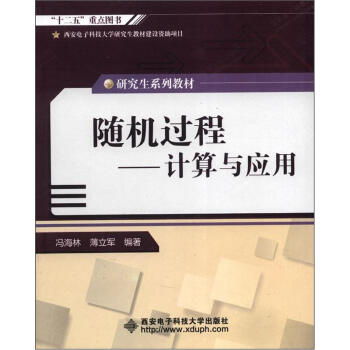
![北京大学化学实验类教材:化学实验室安全知识教程 [Introduction to Safety in the Chemical Laboratory] pdf epub mobi 电子书 下载](https://pic.tinynews.org/11148714/rBEHZ1DdBBUIAAAAAAcpPkB9iiwAADcowPbYVcABylW321.jpg)
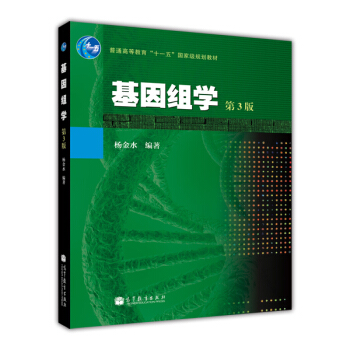
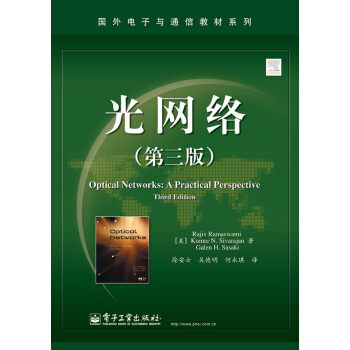
![原汁原味的美国口语教材:爱在纽约(第1册)(附光盘) [Love in NewYork(1)] pdf epub mobi 电子书 下载](https://pic.tinynews.org/11263437/rBEhVVHk8nYIAAAAAAHbkPBEHDAAABFBQDOw8QAAduo879.jpg)


![管理学基础(第2版)/高等院校“十二五”核心课程精品教材 [Fundamentals of Management] pdf epub mobi 电子书 下载](https://pic.tinynews.org/11326361/rBEhVlJE14EIAAAAAAHD65UPOwsAADm2ACG47IAAcQD309.jpg)
